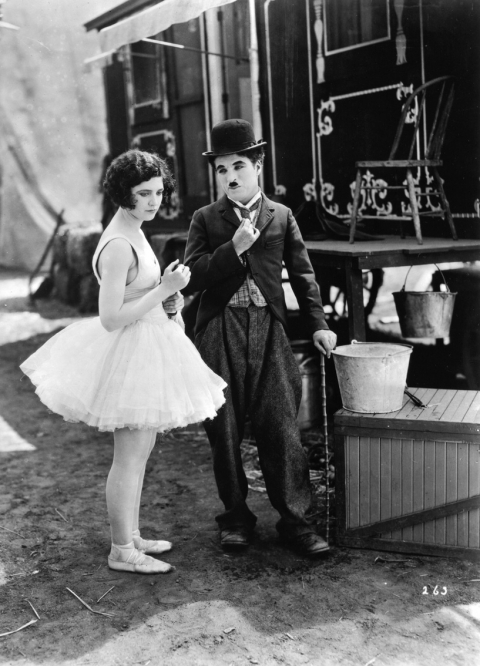Arquivo
The Circus (1928)

Sobre o filme
When Charles Chaplin won the first Academy Award of his career in 1929 for The Circus, the statue was handed due to his “versatility and genius in writing, acting, directing and producing”. Chaplin had the idea for his last silent film while already imagining its climax, where The Tramp is attacked by monkeys while walking on a tightrope – a scene inspired by the works of his contemporary Harold Lloyd. From that point on, he constructed the rest of the plot: The Tramp is chased by the police and ends up inside a circus. Once at the Big Top, his attempts to evade the cops end up entertaining the public, inspiring the owner of the place to hire him on the spot as an attraction. When The Tramp falls in love with the owner’s acrobatic daughter and a new suitor shows up, he begins to compete for her affection. A lot of the admiration that Chaplin’s film receives today not only comes from the overall quality, but also from the circumstances surrounding its difficult and chaotic production. Chaplin and Harry Crocker, who played his rival, spent months perfecting their tightrope walking skills. The scenes involving lions were shot with Chaplin interacting with actual lions, making The Tramp’s expressions of fear something very real. After weeks of shooting, the crew discovered that the laboratory accidentally scratched all of the material that had been sent to them. At the time, Chaplin was divorcing his wife Lita Grey, who threatened to seize the studio assets. Production was suspended for eight months, with Chaplin hiding the material that had already been filmed. Further complicating things, a fire broke out in the studio during the ninth month of production, destroying various sets. The Circus was released in January of 1928, a few months after film entered the sound era with The Jazz Singer (1927), becoming one of the last financial successes of silent cinema. The new score Chaplin ignored The Circus for years due to the production difficulties, not even mentioning it in his autobiography. At the end of the 60s, he composed a new soundtrack for the film’s rerelease, as he would do with many of his features in the following years after decades of being unsatisfied with the original arrangements. The score reflects Chaplin’s origins, growing up surrounded by variety shows, with the music carrying a vaudeville influence. A professional vocalist was hired to sing the new title theme “Swing Little Girl”, but musical director Eric James thought the voice of 79-year-old Chaplin would achieve a better effect. Musician Timothy Brock supervised the score’s restoration for live performances during a six-month period between 2002 and 2003, working with the manuscripts from the Chaplin Archives in Montreux, Switzerland. This new adaptation is presented by the 38th Mostra, with an outdoor screening of a restored print at Ibirapuera Park – following the historic screenings in the same venue: Metropolis in 2010, Nosferatu in 2012 and Nathan, the Wise in 2013. With the exception of Chaplin’s voice singing “Swing Little Girl” over the credits, the Experimental Repertoire Orchestra of the Municipal Theatre of São Paulo Foundation will perform the score live.
Título original: The Circus
Ano: 1928
Classificação: General Audiences
Duração: 71 min.
Gênero: Fiction
País: USA
Cor: P&B
Direção: Charles Chaplin
Roteiro: Charles Chaplin
Fotografia: Roland Totheroh
Montagem: Charles Chaplin
Elenco: Charles Chaplin, Merna Kennedy, Al Ernest Garcia, Harry Crocker
Produtor: Charles Chaplin
Produção: Charles Chaplin Productions, United Artists
Música: Charles Chaplin (adap. Timothy Brock)
Edições: 38


